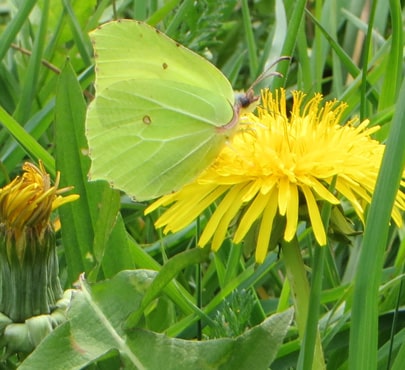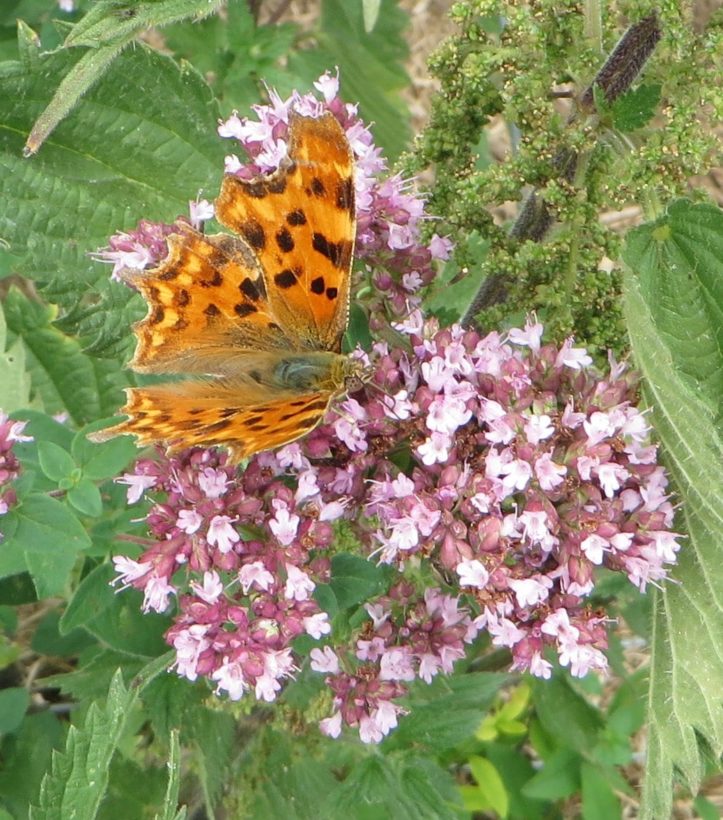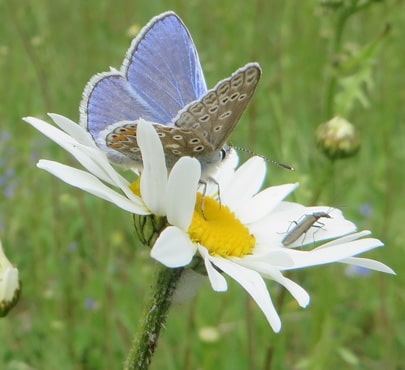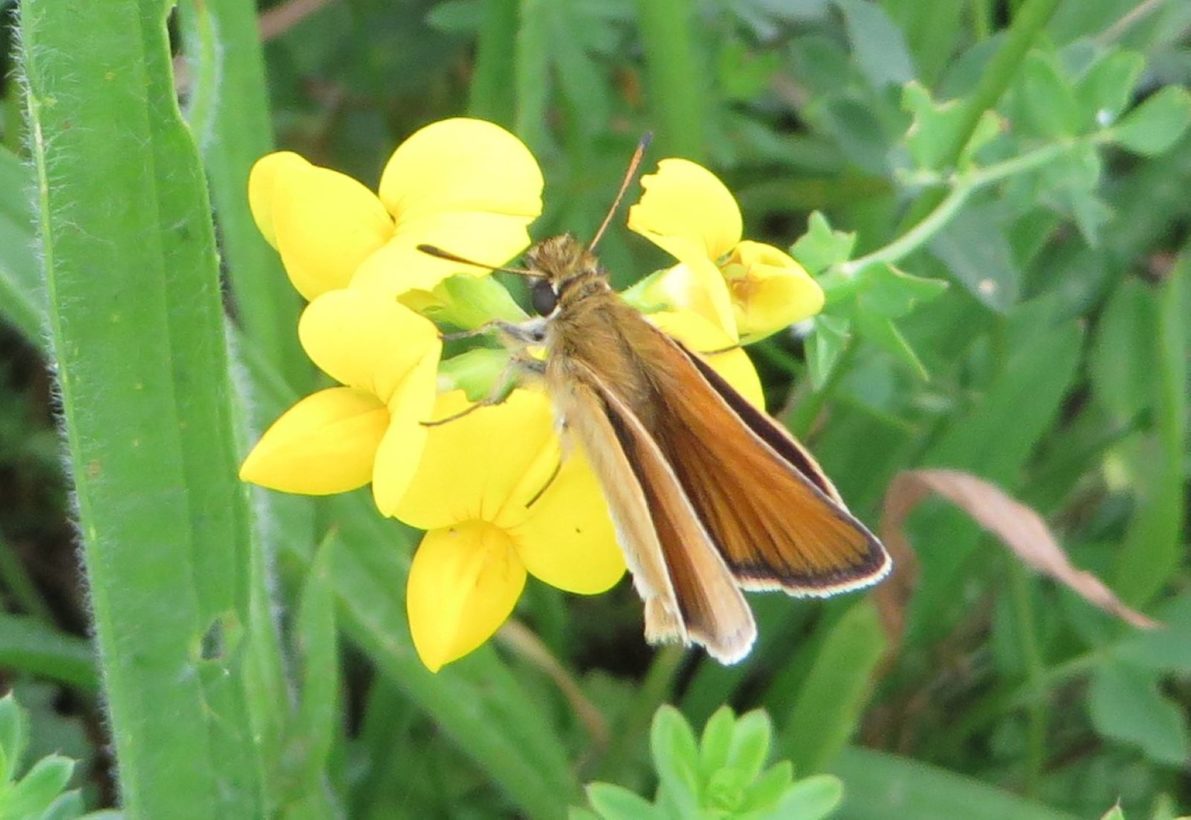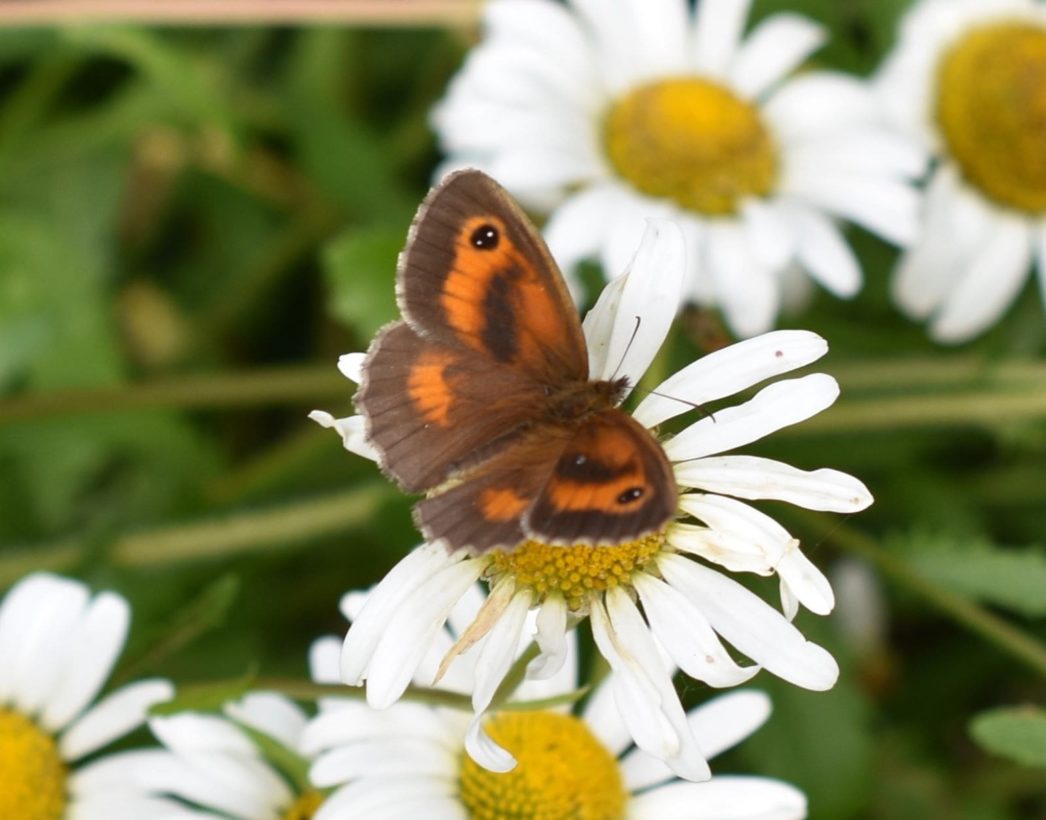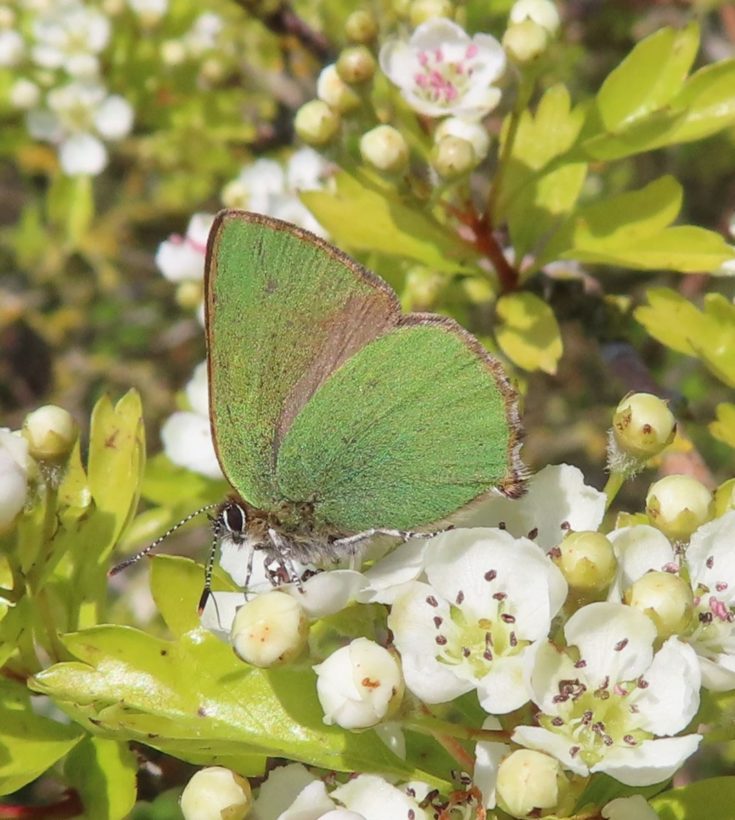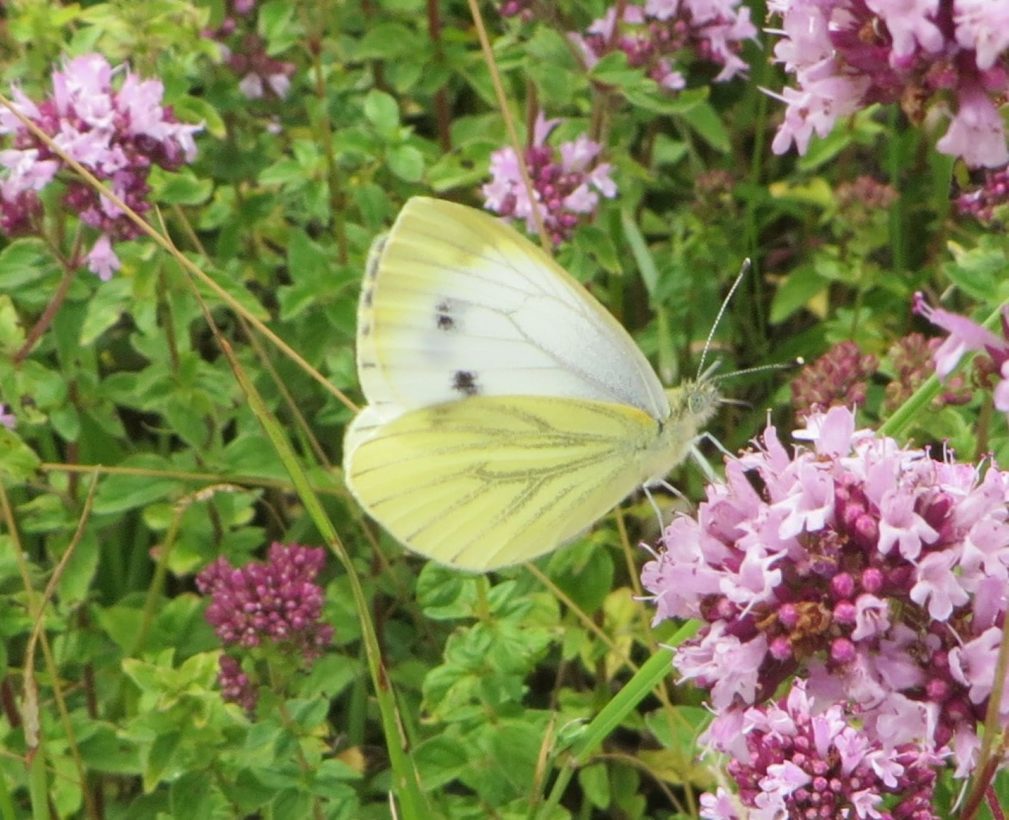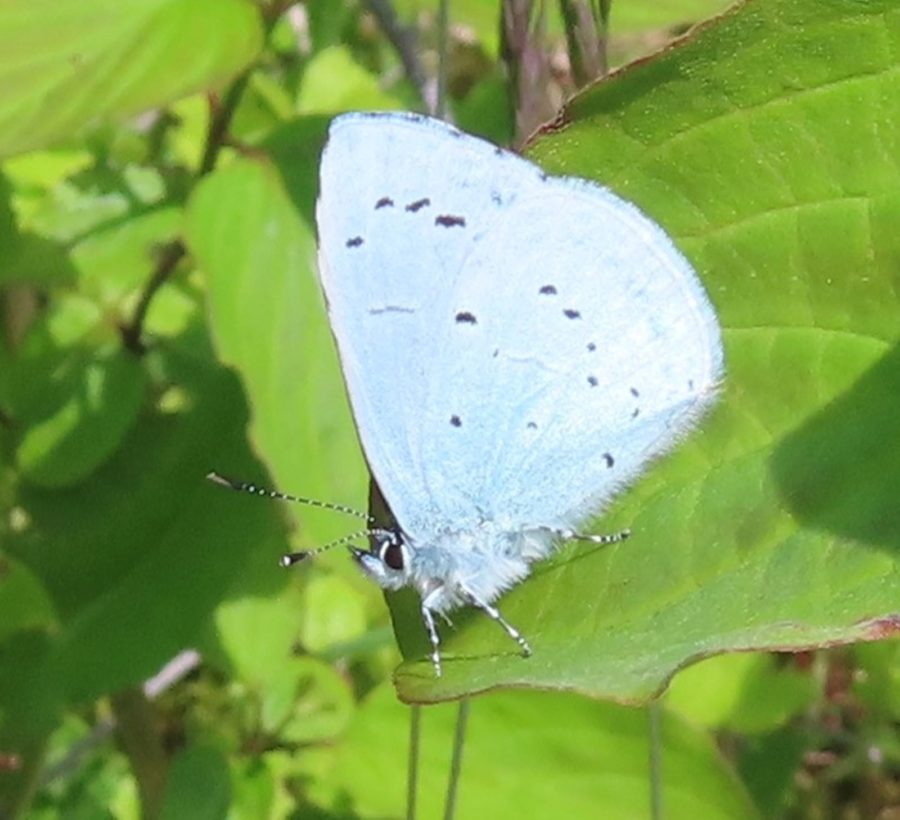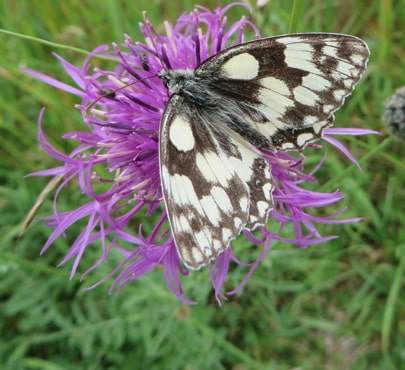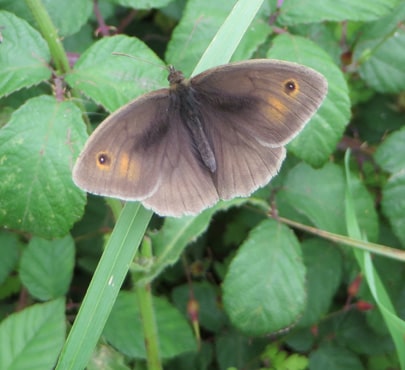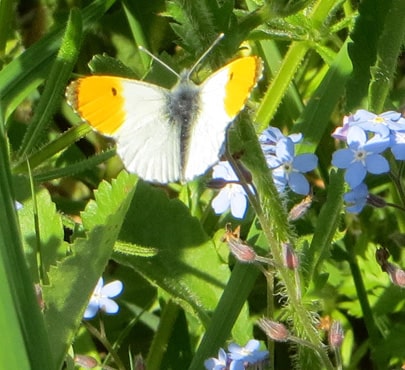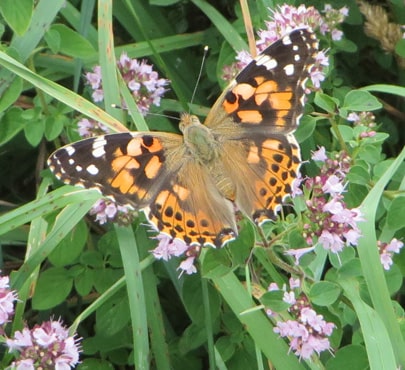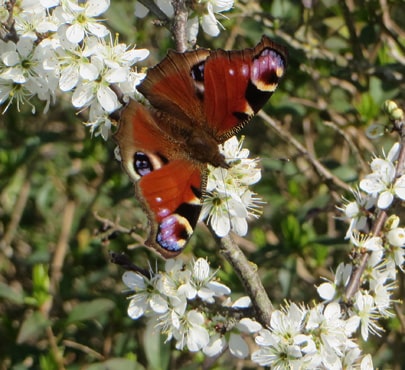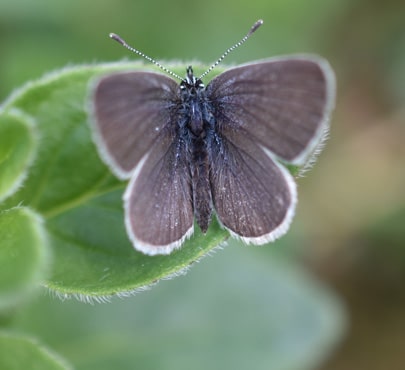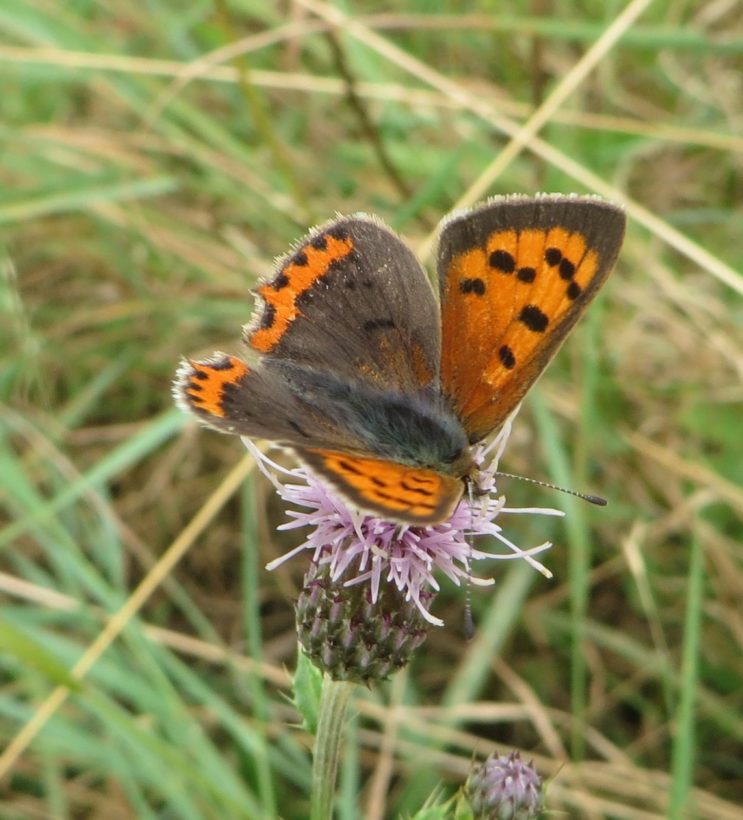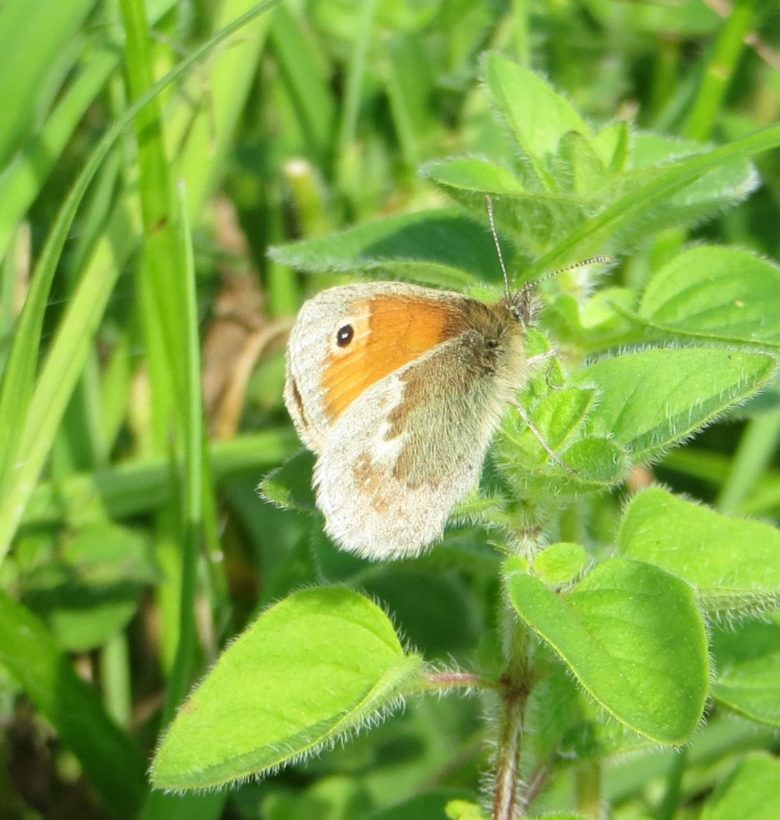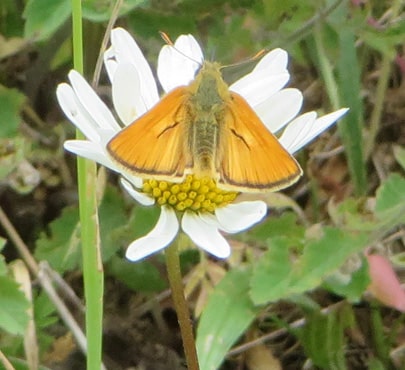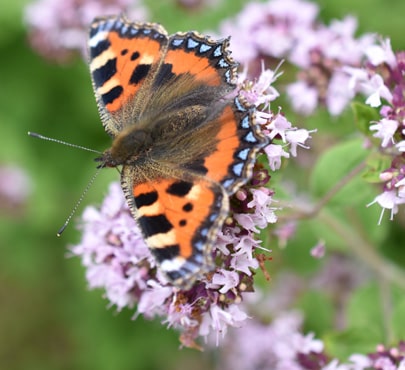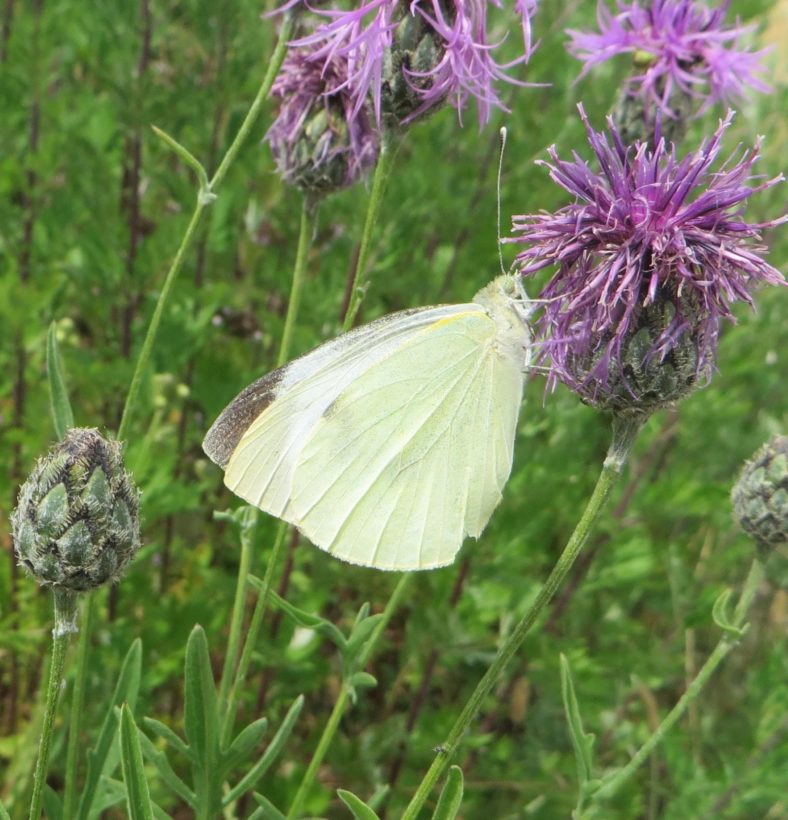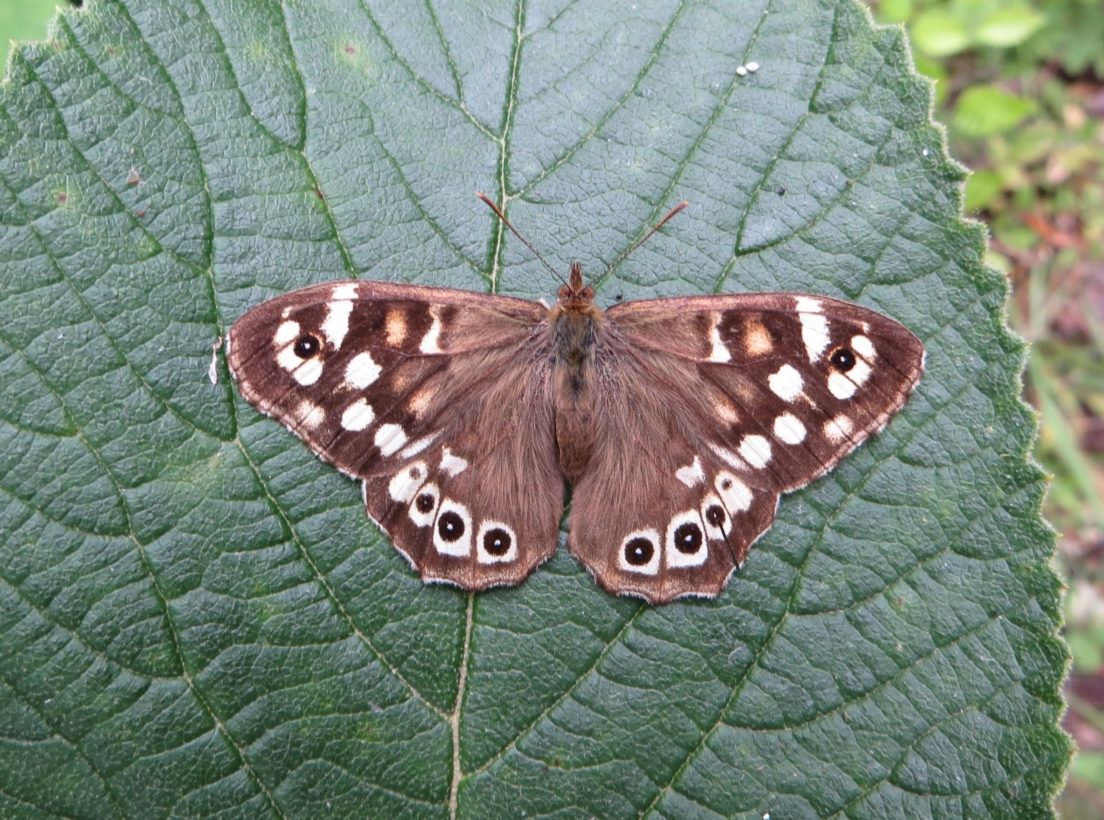Butterflies, moths and other insects
Butterflies on Magog Down
Over the last thirty years, since the Down was created from former farmland, butterfly species have become established by natural means (that is, resident species which are common in the Cambridge area have spread into it). Regular surveys of the butterfly population are undertaken using the formal ‘Transect Method’ of monitoring. Through the summer months the same areas of Magog Down are walked regularly, counting the butterflies that fall within a 5m square around the surveyor.
The countryside of Magog Down provides a mosaic of butterfly habitats. This leaflet provides names and photos of the amazing range of butterflies to be seen at the Down, including information on where and when you might see them.
If you are interested in learning more about a particular butterfly (or several species) that you have seen or is mentioned in the leaflet, click on the images below for more detailed information.
Different butterfly species have different behaviours. Some stay in the same area year after year, such as the Small Blue. Some will move short distances to a newer suitable habitat nearby. Other species are more mobile, flying considerable distances to find food and caterpillar food plants. The Brimstone butterfly travels many miles along hedgerows looking for Buckthorn on which to lay its eggs in spring.
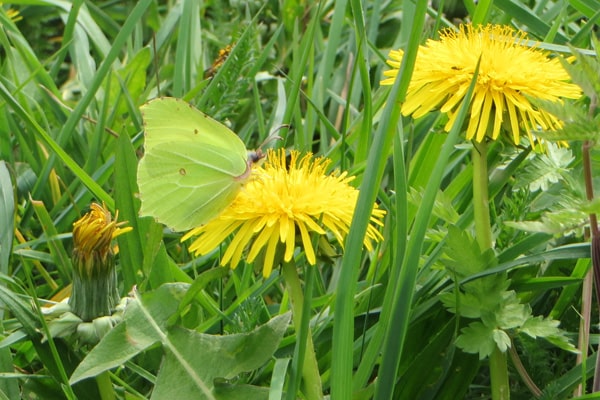
Brimstone butterfly
Some butterflies are migratory and fly hundreds of miles to come to the British Isles. One of these is the Painted Lady – a summer visitor from southern Europe.
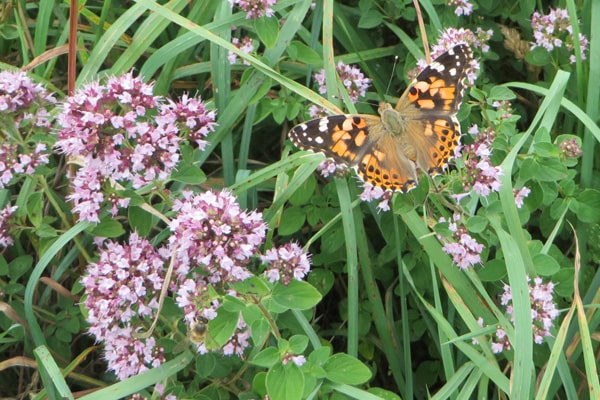
Painted Lady butterfly
Hedgerows and woodland shrub margins provide a profusion of plants, shrubs and trees where many species of butterfly feed and breed, also offering shelter from wind, sun traps for basking and shade for species that prefer partial sunlight. Hedgerows also link habitat areas, providing butterflies with protection and nectar when they are moving across open areas. Some butterflies hibernate in hedges, while some individual male butterflies establish ‘territories’ along sections of hedgerow.
The chalk grassland of Magog Down has a very rich flora with wild flowers, herbs and grasses adapted to the dry conditions. Management of chalk grassland is essential to ensure that these plants can flourish, so that they can flower and provide nectar, develop seeds and produce seedlings. Meadows are grazed or cut on rotation, with long grass areas providing summer and overwinter shelter and food for many birds, insects and mammals. The meadows are home to large numbers of scarce and highly local butterflies and moths whose caterpillars feed on specific plants.
The chalk grassland of Magog Down supports large numbers of Marbled White butterflies. Caterpillars feed on grasses such as Red Fescue and adult butterflies visit meadow flowers for nectar, preferring those which are purple in colour.
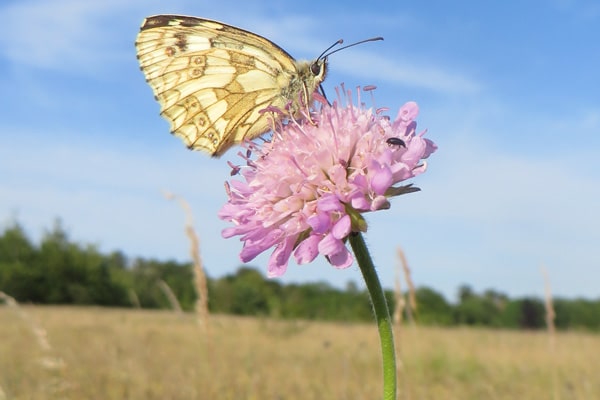
Marbled White butterfly
The Brown Argus is another butterfly of chalk downland, in particular where Common Rockrose grows. It stays in small compact colonies, with the caterpillar of the Brown Argus feeding on the underside of Common Rockrose leaves and hibernating on the plant.
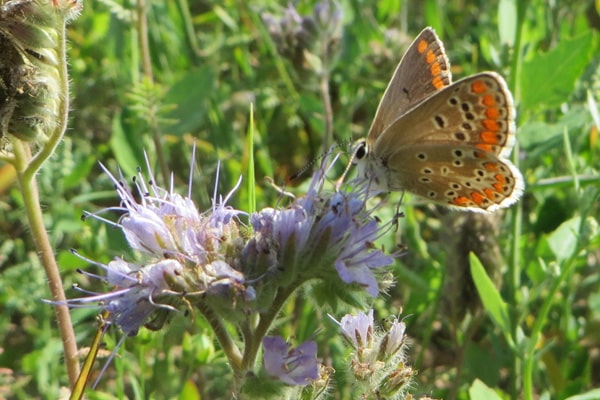
Brown Argus
Nearly all the butterfly species which it was hoped would become established when the Down was created can now be seen, with increasing numbers of Marbled White butterflies since 2016. The newest species to become established, to great excitement from everyone involved with Magog Down, is the Small Blue butterfly which is rare and in decline, often confined to small areas of grassland. Numbers are increasing due to plentiful Kidney Vetch plants which are the food plant for its caterpillars.
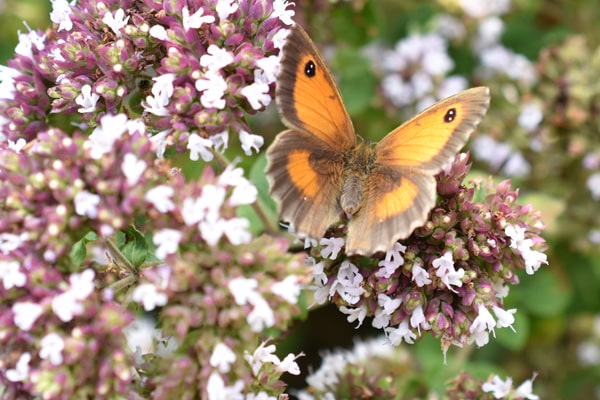
Gatekeeper butterfly on Wild Marjoram
There is a dedicated group of butterfly enthusiasts who post regularly on Twitter about what has been seen on Magog Down – go to the Magog Down twitter page.
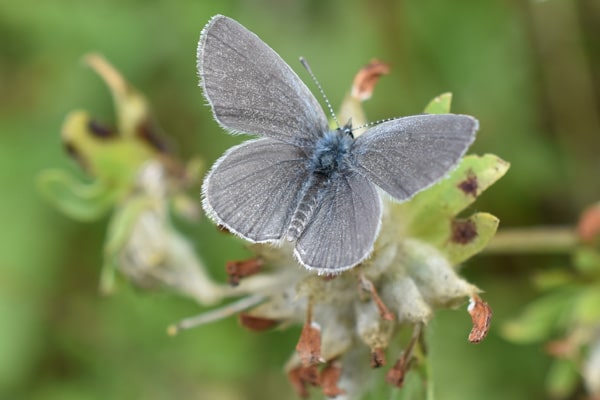
Small Blue butterfly
Colin’s Bank on Magog Down
Colin’s Bank is located immediately above the footpath which marks the top of Colin’s Paddock and runs from small gates at either end.
Professor Colin Smith was a keen lepidopterist who took a great interest in the Down. He was convinced that the increase in the natural flora would provide the necessary food supply to encourage a further growth in the number of Butterfly and Moth species on the Down.
He regularly contributed articles to the Trust’s Newsletter and carried out surveys over several years, and by the end of 1995 had recorded 20 species of Butterflies and 152 of Moths.
His death in 1997 is marked by a seat on the North Down, but two years later this site (an area of old woodland on the south side of Little Trees Hill) was identified by Dr Max Walters and Gerry Haggett, a Norfolk Naturalist, as one which if cleared of trees and shrubs, would produce an ideal sunny, sheltered bank on which to improve the variety of native chalkland flora. The initial work was carried out in 2000 with financial support from Colin’s family.
Further work to improve the diversity of the natural flora providing an increased food supply for Butterflies, Moths and other insects took place in 2004 and was part funded by an Environmental Grant from Cambridge City Council.
The most recent project has been to open up the area behind the bank, where the topsoil has been removed down to the chalk to encourage chalk grassland species to re-establish and flourish.
There’s a biography of Colin here.

